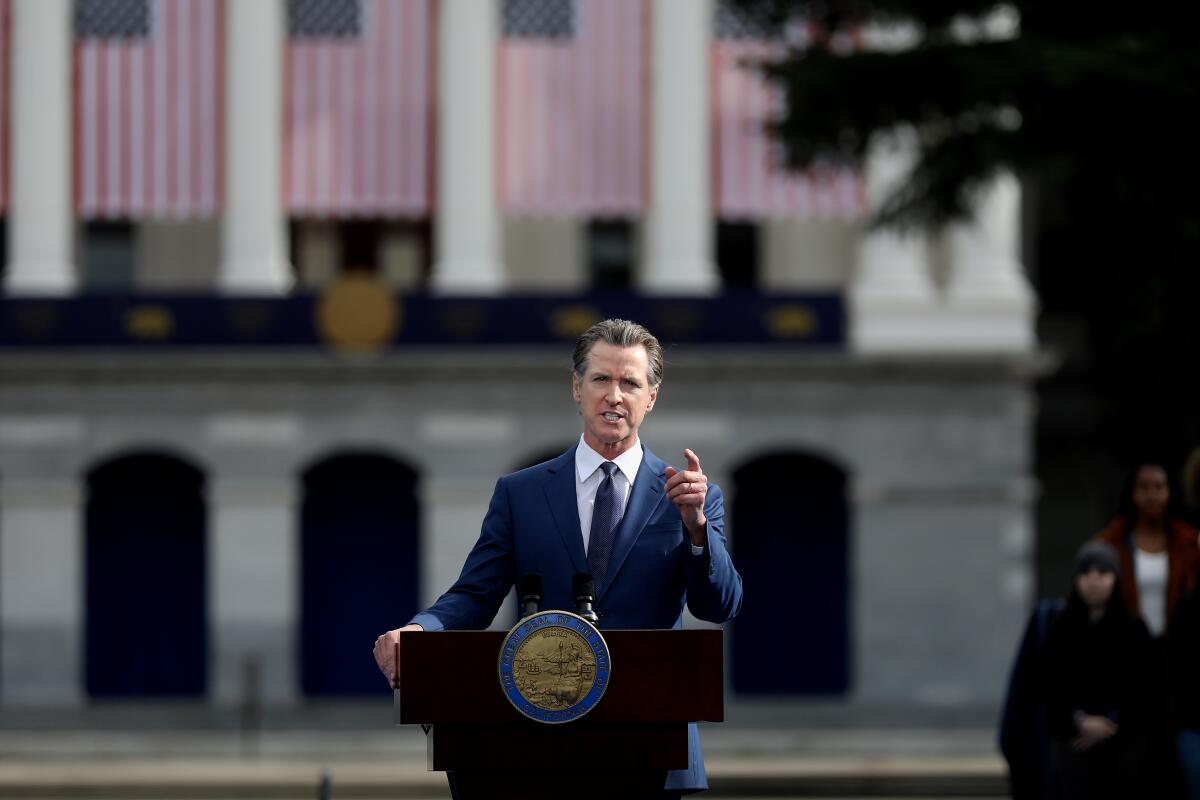Editorial: California’s budget gets back to reality

It was fun while it lasted. But 2023 will be the year that reality comes back to the California budget.
For the last several years, the state has enjoyed record budget surpluses thanks to a soaring stock market and investment earnings from the state’s wealthiest taxpayers. Just last year the state forecast a surplus of $100 billion and Gov. Gavin Newsom had so much money to spare he could send “inflation-relief” checks to most Californians.
Now the good times appear to be winding down. Because of continued high inflation, rising interest rates and declines in the stock market, the Newsom administration is, for the first time, planning to cut or delay spending to close a projected $22.5-billion deficit. This will be a test for Newsom and legislators — can the state manage the revenue slowdown and possible recession without slashing the investments California needs for a sustainable and prosperous future?
A proposal by Gov. Gavin Newsom to cap the profits of oil refiners to prevent price gouging is a good idea. Oil companies shouldn’t be able to fleece Californians.
To their credit, the governor and legislators used the surpluses to bolster the state’s reserves and rainy-day fund. Newsom has wisely chosen not to tap into reserves at this time. While a $22.5-billion deficit sounds shocking, it’s as the governor said Tuesday, a “modest shortfall” amid slowing economic growth. A recession could trigger much steeper deficits, and California would have to rely on reserves to keep essential services operating. It’s better to wait for a stormy day to dip into those funds.
For the most part, Newsom maintained funding for his marquee programs, including rolling out universal transitional kindergarten for 4-year-olds, expanding free healthcare for undocumented residents and continuing record levels of funding to ease the state’s homelessness and affordable housing crises.
However, there were disappointments in his budget proposal that could dampen the state’s longer-term ambitions, particularly in fighting global warming. While the state still aims to spend nearly $50 billion over the next five years on climate initiatives, Newsom’s budget calls for a $6-billion cut in planned expenditures, including incentives to help motorists and businesses transition to zero-emission vehicles and investments in public transit, bike and pedestrian projects.
Newsom said he expects the private sector will step up investments in clean infrastructure and he hopes to offset some of the cuts with federal funding. But the infusion of federal dollars through the bipartisan infrastructure bill and the Inflation Reduction Act were supposed to be in addition to state dollars, not replacing state dollars.
The cost estimate for California’s clean-vehicle transformation is $150 billion over the next three decades; the need for public investment in clean transportation is great and urgent. Newsom and the legislators have to ensure that even if state funding slows, the work of existing programs and private investments can still move forward. Meeting the state’s greenhouse-gas-reduction targets will depend on more than money. It will require the state to use its powers to set policies and regulations that move the market toward cleaner technology.
Having flush coffers makes governing easier. But when the revenue slows, Newsom and legislators still have enormous authority to make government work better now and into the future.
More to Read
A cure for the common opinion
Get thought-provoking perspectives with our weekly newsletter.
You may occasionally receive promotional content from the Los Angeles Times.











